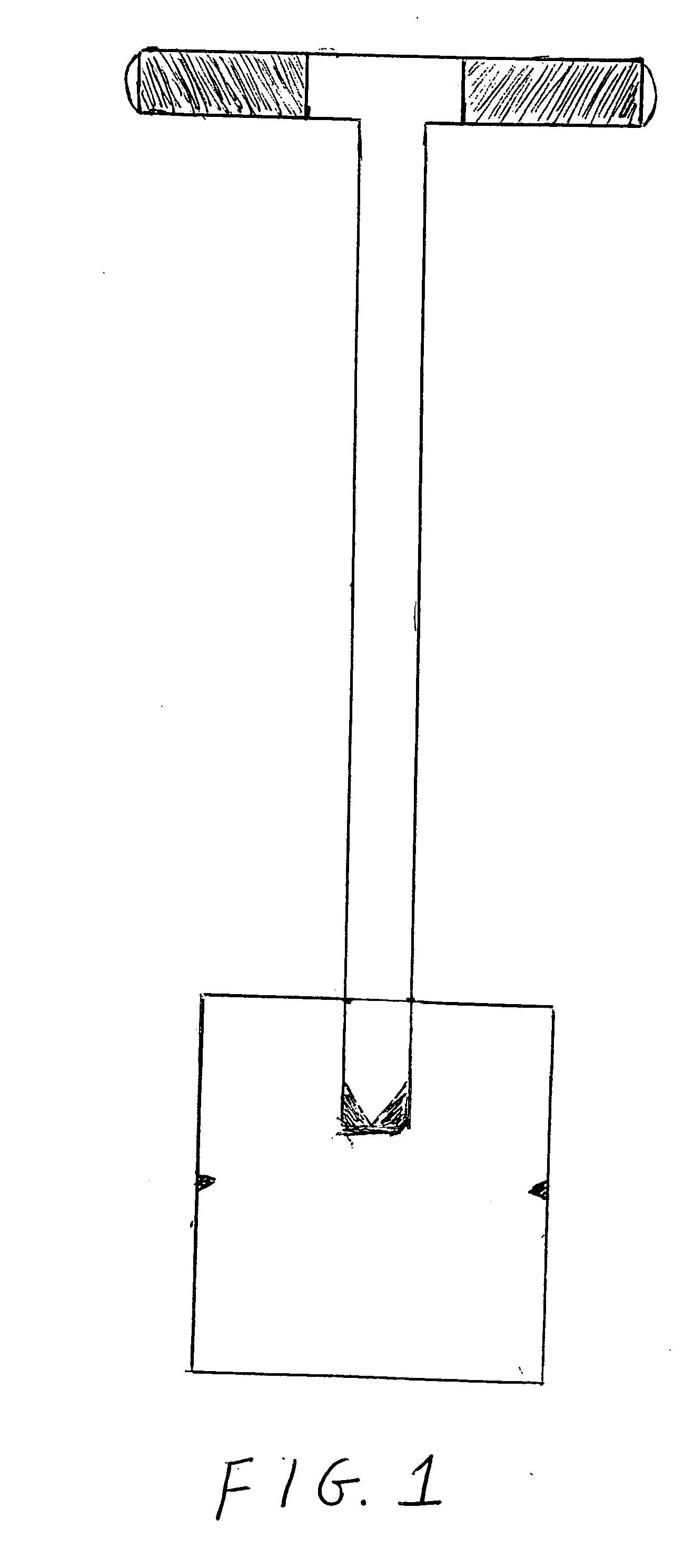Invisible trencher
- Summary
- Abstract
- Description
- Claims
- Application Information
AI Technical Summary
Benefits of technology
Problems solved by technology
Method used
Image
Examples
Embodiment Construction
[0028] The Invisible Trencher is a single unit made of three main parts. All three parts are one-quarter (¼) inch cold rolled steel and consist of: 1) a twelve (12) inch square notched at six (6) inches comprises the blade attached to the bottom of the tool; 2) a thirty-two (32) inch long cylinder or shaft with a diameter of 1⅞ inches, which at the bottom is attached the blade and at the top a handle is attached; and 3) the handle is a sixteen (16) inch cylinder with a diameter of 1⅞ inches.
[0029] The parts are welded at the top of the shaft and at the bottom of the shaft to attach the blade and the handle.
[0030] The shaft at the bottom has a 4½ inch slit on each side so that the blade fits into the bottom of the cylinder and then the bottom ends are flattened along the flat side of the blade where the shaft attaches to the blade. A weld is then made sealing the blade to the shaft. The cylinder may or may not be filled with concrete depending on the soil type. Sandy soil would not...
PUM
 Login to View More
Login to View More Abstract
Description
Claims
Application Information
 Login to View More
Login to View More - R&D
- Intellectual Property
- Life Sciences
- Materials
- Tech Scout
- Unparalleled Data Quality
- Higher Quality Content
- 60% Fewer Hallucinations
Browse by: Latest US Patents, China's latest patents, Technical Efficacy Thesaurus, Application Domain, Technology Topic, Popular Technical Reports.
© 2025 PatSnap. All rights reserved.Legal|Privacy policy|Modern Slavery Act Transparency Statement|Sitemap|About US| Contact US: help@patsnap.com



